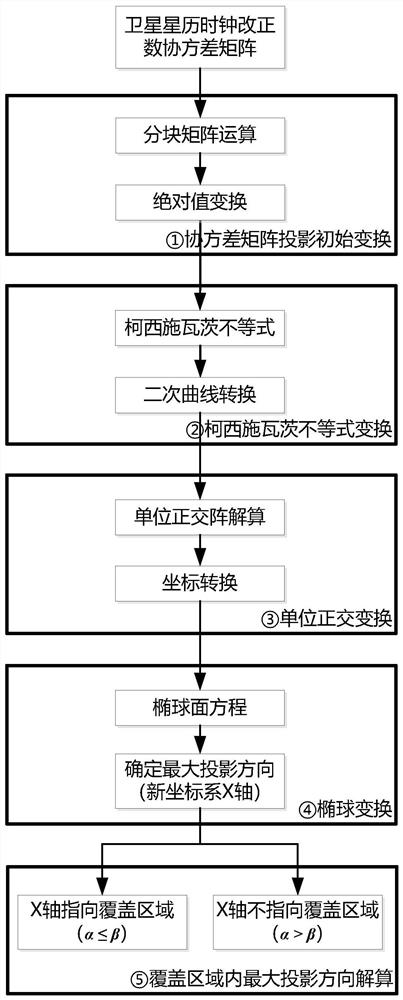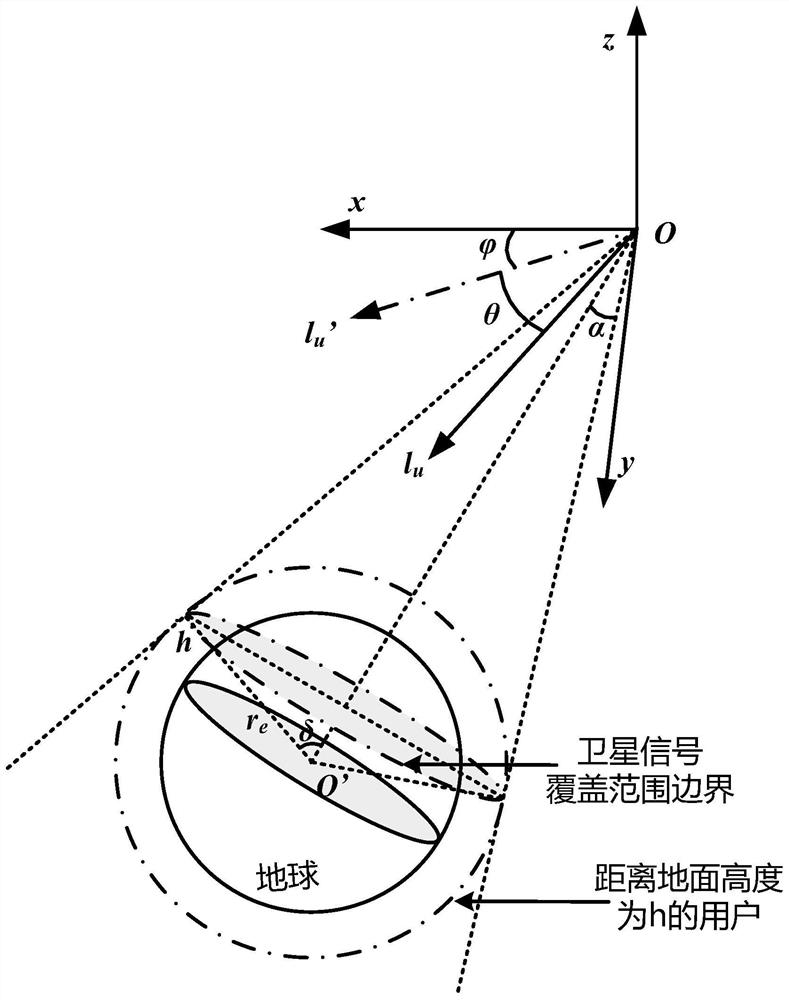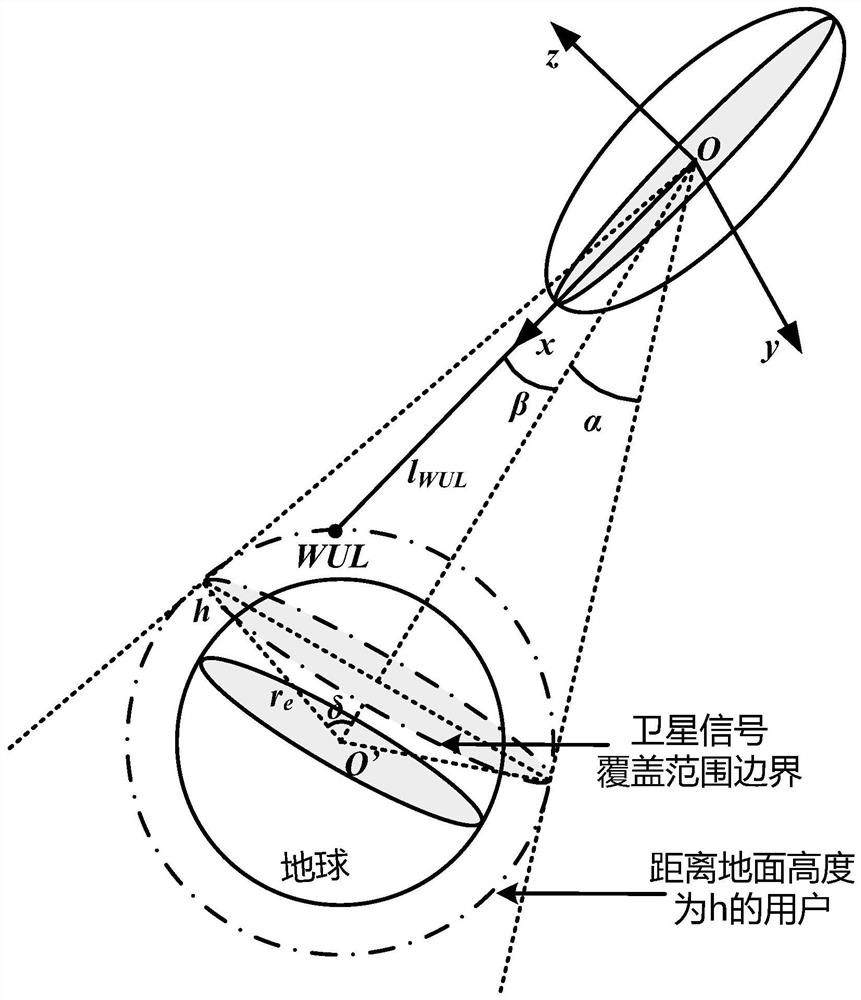Method for searching maximum projection direction of ephemeris time clock correction covariance matrix
A technology of covariance matrix and projection direction, applied in the field of satellite navigation enhancement, can solve problems such as unseen
- Summary
- Abstract
- Description
- Claims
- Application Information
AI Technical Summary
Problems solved by technology
Method used
Image
Examples
Embodiment Construction
[0059] The present invention will be further described below in conjunction with the accompanying drawings and embodiments.
[0060] The present invention is a method for finding the maximum projection direction of the ephemeris clock correction number covariance matrix in the satellite coverage area, and the specific steps are as follows: figure 1 As shown, the steps are as follows:
[0061] Step 1: Covariance Matrix Projection Initial Transformation
[0062] DFRE(σ DFRE ) is the comprehensive reflection of the correction residual at the user end. It is necessary to form an envelope for the maximum correction residual of the ephemeris and clock corrections within the satellite coverage area. DFRE is expressed as:
[0063]
[0064] In formula (1), is the maximum projection direction of the covariance matrix within the satellite coverage, and the user position located in the maximum projection direction is the worst user location (Worst User Location, WUL), is the un...
PUM
 Login to View More
Login to View More Abstract
Description
Claims
Application Information
 Login to View More
Login to View More - R&D
- Intellectual Property
- Life Sciences
- Materials
- Tech Scout
- Unparalleled Data Quality
- Higher Quality Content
- 60% Fewer Hallucinations
Browse by: Latest US Patents, China's latest patents, Technical Efficacy Thesaurus, Application Domain, Technology Topic, Popular Technical Reports.
© 2025 PatSnap. All rights reserved.Legal|Privacy policy|Modern Slavery Act Transparency Statement|Sitemap|About US| Contact US: help@patsnap.com



